In the farther north, there are certainly ice runways out of necessity - there just are no roads. In some cases, the ice runways support the construction of seasonal ice roads, particularly with flying in construction equipment, and fuel. I friend cut a Cat D3 bulldozer into three sections, flew each section into an ice runway in three flights, plus more for fuel and added equipment. In the spring, he welded the Cat back together, and used it to build his year 'round earth runway. I doubt he brought the dozer back!
The 150 was surprisingly undamaged. the engine wings and tail all came off for ground transport to a nearby maintenance shop. Pending confirming structural inspection, the airframe should be fine. The dent in the cowl popped out. I have the divers chainsaw a wide "channel" in the ice, so that as we floated it in to shore, the tail had an unobstructed path in the water. I walked the wingtip into prevent any wing damage.
The engine will be inspected for a prop strike, though it was a minor one (the ice was mushy - there was no propeller damage). Hot immersion is what it is - not good, but done now! For flipped over hot immersion floatplanes, one we right and refloat them, if we can get the mags off and dried out, and change the engine oil (draining any water out of the engine) we'll run the engine that day. Several times we've had a floatplane with the wings bent right back outboard of the struts, running on shore, just to circulate warm oil in the engine, and boil off any other water in there that we can. Once, a recovery person flipped a C206 floatplane upright, dried it out, ran the engine, and accidentally flew it out that day for proper repairs. Transport Canada was not pleased with that!
The instruments don't take all of this so well. If they are stored in the fresh water, and make it to the instrument shop right away, they can usually be saved. Alternatively, if disassembled, dried out and preserved, they are usually okay. If they are ignored, they're scrap within a day or two. Avionics fare even less well. Usually, we don't equip "bush" planes with much more avionics than needed, for this reason.
This 150 will be flying this spring on floats. He and I go water flying together occasionally, with "who can get off the water the fastest" challenges. If I remember, I'll close this thread with a photo of it floating properly!
The airframe might take to the skies again - but what are the chances the engine can still serve? It has been soaked with water, perhaps imbibed some while still running..? I should think at least it must be taken apart for inspection?
It's fresh water - I can't see why not. It's just a case of somewhere hot and dry for long enough.
I've seen seaplane manuals that recommend following a capsize, turn it around, haul it out, dry it out, and go back to flying after some reasonably straightforward safety checks.
Not to mention the massive water ingress I've seen in numerous club spamcans in the UK, somehow without their turning into deathtraps.
G
Can a plane really be dried out?
There are many metal to metal joints where water can get into the gap and stay there. One is supposed to do such joints with a sealant (Duralac and PRC1422 are two options) but this is rarely done on the lower-end GA types.
Thanks for those photos - really interesting.
Out of interest, what's the prognosis for the plane? I can see the cowling has been dinted a bit, but there seems to be surprisingly little injury given how thin some of the wing skins are. I'm guessing that all the instruments will be untrustworthy and have to be replaced, but that the engine and airframe essentially just need to be dried out - I take it that this is freshwater immersion?
Amazing photos there PDAR! Thanks for sharing.
Out of interest to people land on frozen water just for fun, or is there a real utility to it? (Not that there isn't a utility to having fun!)
I suppose what I'm wondering is are some of these places reliant on "ice runways" for access when regular runways are covered in snow, or are they waterdromes during the summer and ice runways in the winter?
It's a type of flying that I know nothing about.
Colm
Yeah, a bigger helicopter would have made all the difference. There are none bigger based anywhere in the area.
The plane was sitting on the bottom on its skis, so further sinking was happily not a risk. I did mean that we had to float it to move it in the channel we chainsawed in the ice.
So we got it out the old fashioned way this morning. Happily nearly no damage caused during recovery! The wings are being removed, and it will be back at the airport drying out shortly...
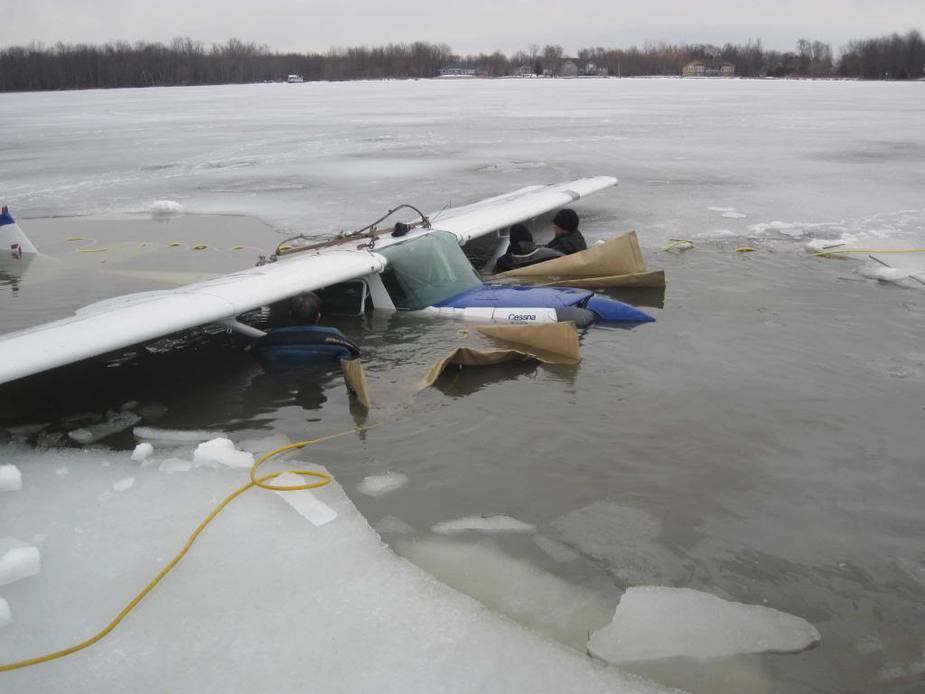
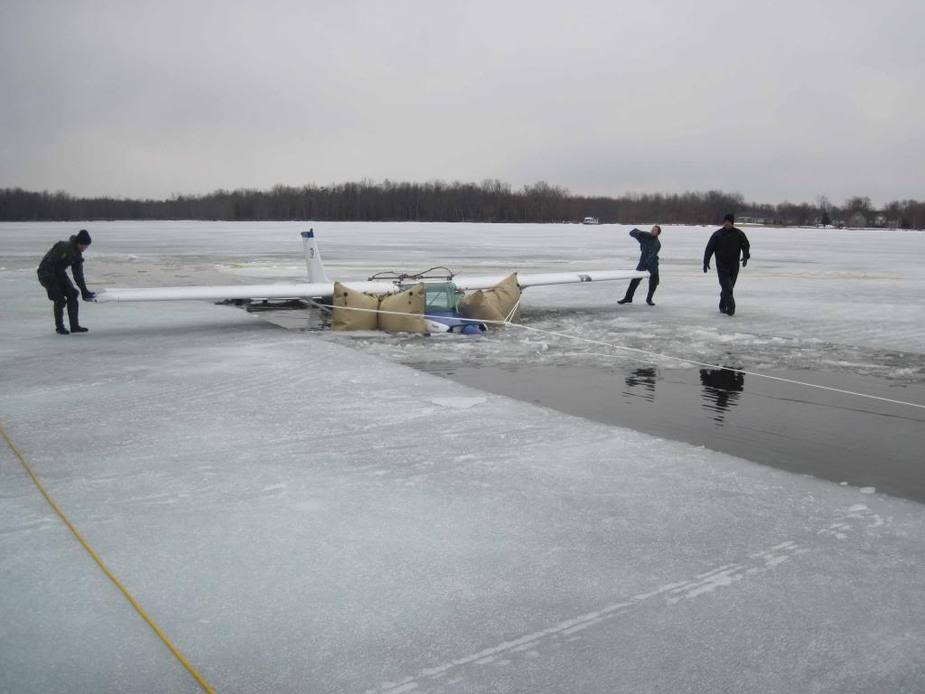
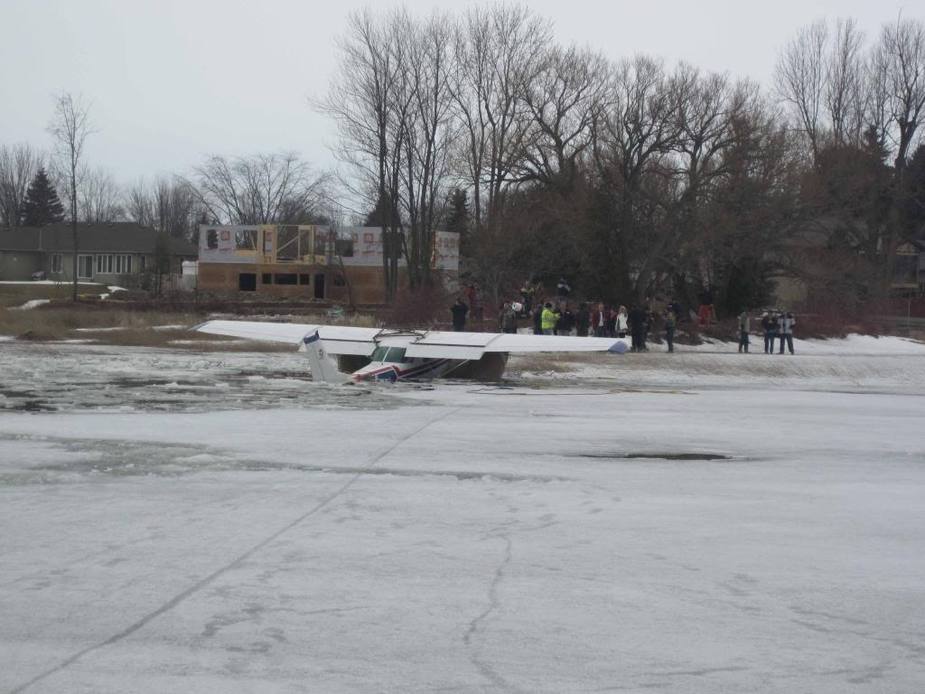
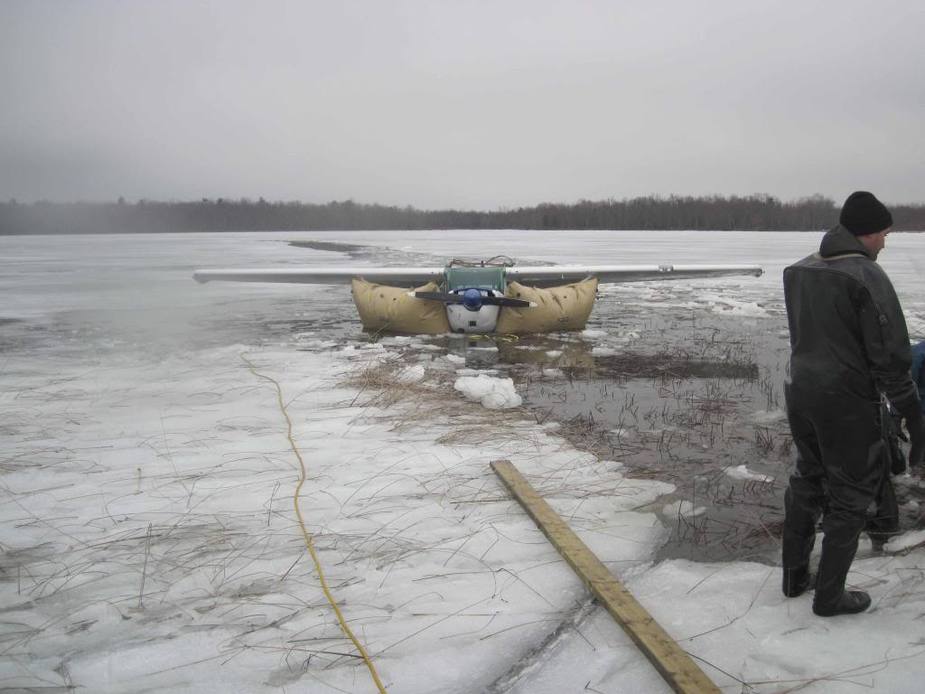
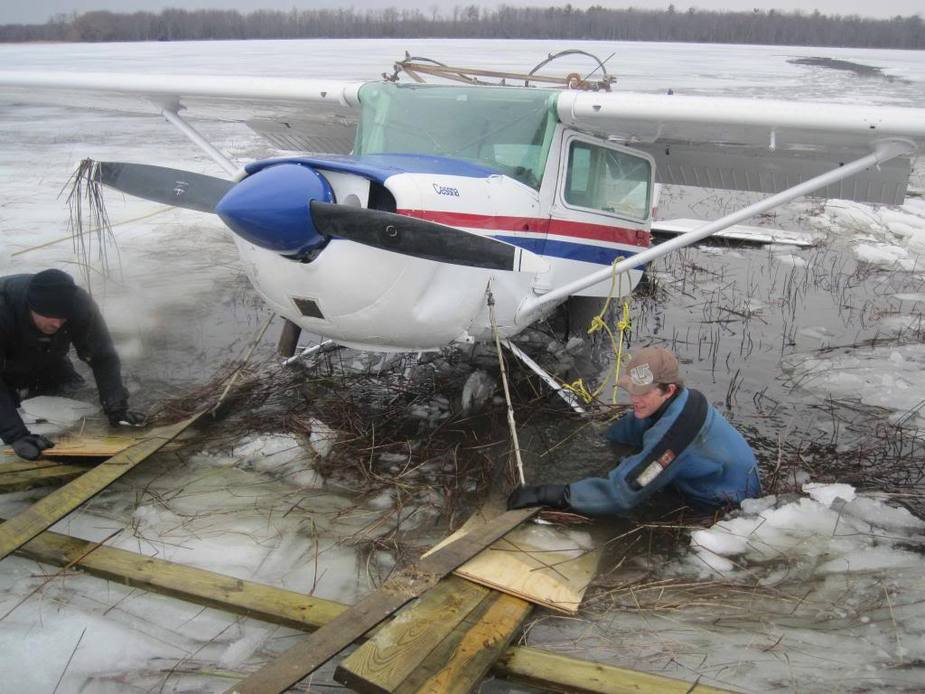
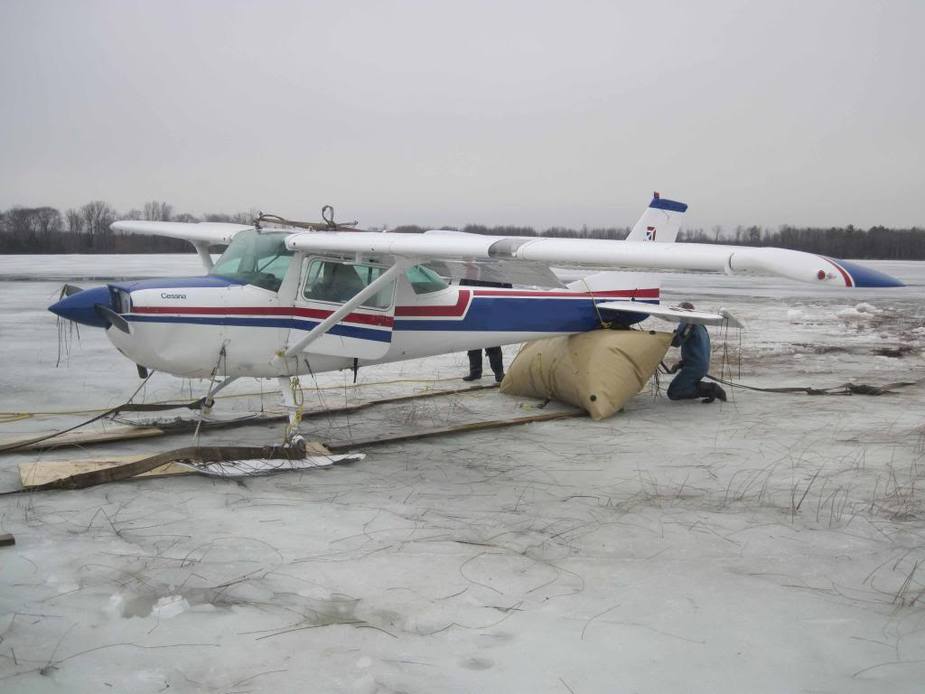
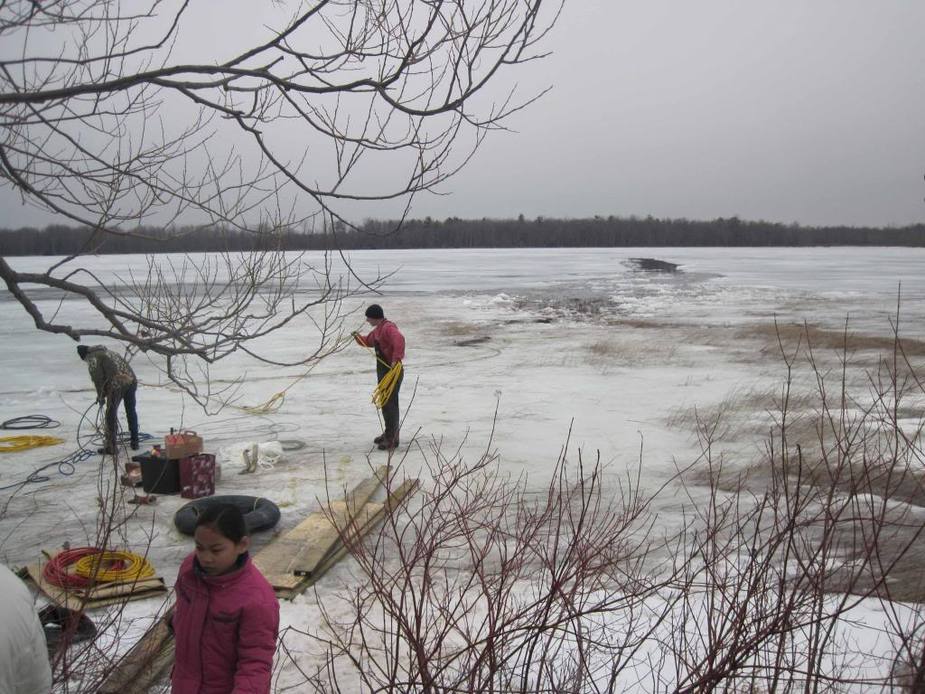
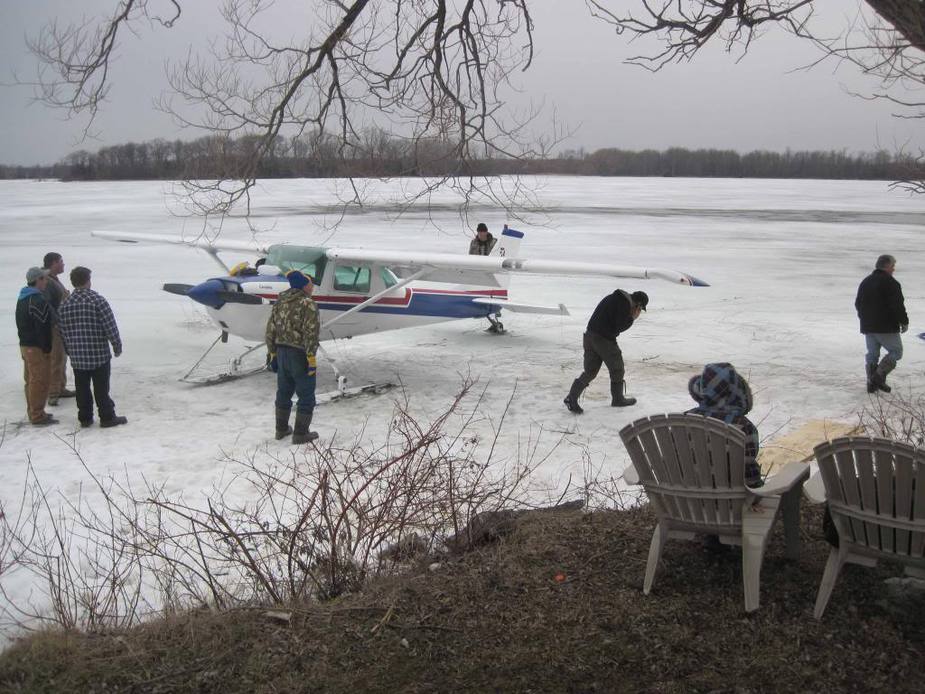
Landing on the ice is somewhat common, and more so as you go north in Canada. The biggest plane I have landed on the ice is the 182RG, which is probably the most poor choice of Cessna for this role. As is obvious, you REALLY have to know the ice before you commit to landing. This is a very experienced based activity!
Pilot DAR, that's an exceptional set of photos & report... - quite a way to spend Easter holidays! 
Very interesting.
I have a photo above my desk - origin unknown - of a Cessna which is completely sunk through ice and just the wings are lying on top of the ice. The ice is cleanly broken so it doesn't look like the occupants would have got out easily...
Wow! Incredible photos. Thanks for sharing. I don't expect I'll get the opportunity to land on ice but interesting nonetheless. The pilot must have been cold after being in that water.